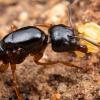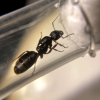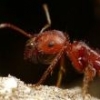Hi, so, I have a small problem, today arrived a package with a lotta stuff for me, but most importantly a Lasius (cthonolasius) sp. and Manica rubida. So, it's all good, both look healthy, Lasius has enough hosts to keep her alive until I figure out how to get more of them or buy the pupae, Manica has 20 larvae at the very least and is very lively. I have an arena ready for the Manica queen ( though will need to buy one for the Lasius ). However there is one problem, the test tubes they arrived in are absolutely tiny, I mean, literally 6 centimeters compared to my test tubes 15, and their water supply is even smaller, so, I figured I should move them, and while I think moving the Lasius will be easy enough due to how those parasitic colonies function, however, I don't know how I will do that with Manica rubida, and unfortunately her water supply is the smallest.
- Formiculture.com
- Forums
- Gallery
- Members
- Member Map
- Chat



















